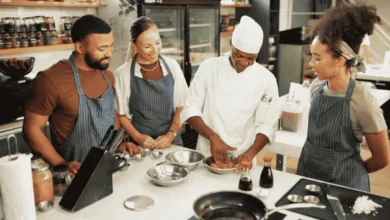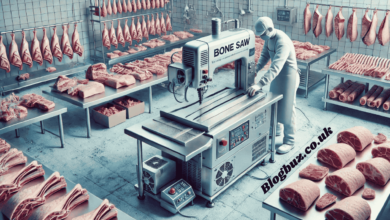Chinatown Hawker Leftovers Consumption: A Deep Dive into Culture, Sustainability, and Innovation

In bustling Chinatown districts worldwide—particularly in cities like Singapore, Kuala Lumpur, and Bangkok—hawker centers have long served as cultural and culinary hubs. These open-air food courts, renowned for their affordability, authenticity, and variety, are more than just food destinations; they reflect deep-rooted traditions and evolving lifestyles. One emerging practice gaining attention within this space is Chinatown hawker leftovers consumption—a movement that embodies sustainability, economy, and community consciousness. In this article, we explore the cultural background, environmental impact, economic benefits, social challenges, and future possibilities tied to the consumption and management of leftovers at Chinatown hawker centers.
The Cultural Roots of Leftovers in Chinatown
The concept of consuming leftovers is not new in Asian societies. Historically, frugality has been a virtue in Chinese culture, where wasting food was seen as a sign of disrespect toward the farmer and the cook. In Chinatowns, these values remain embedded in the community ethos. Whether it’s packing unfinished meals to go or creatively repurposing ingredients into new dishes, leftovers consumption in Chinatown hawker centers is rooted in generational wisdom and cultural preservation.
Eating the same meal across several sittings is common in many Chinese households. At hawker stalls, this principle subtly manifests in day-end practices, such as offering unsold items at discounts, combining ingredients for soup bases, or selling combo dishes with surplus portions.
Hawker Centers and Their Role in Food Waste
Hawker centers, while celebrated for accessibility and variety, are also contributors to urban food waste. A report by Singapore’s National Environment Agency found that food waste from hawker centers comprises about 20% of the city’s total, with customer leftovers making up a significant portion.
Key sources of waste include:
- Oversupply due to vendor competition
- Large portion sizes
- Dishes prepared in anticipation of peak crowds
- Unfinished meals by customers
Consuming leftovers from Chinatown hawkers becomes crucial to address these issues without compromising the centers’ cultural and economic roles.
The Environmental Impact of Food Waste
Globally, food waste contributes to about 10% of greenhouse gas emissions, mainly through methane released from decomposing organic matter. In cities with dense populations like Singapore or San Francisco, Chinatowns form a microcosm where small changes in food habits can have significant environmental effects.
By embracing leftovers consumption, Chinatown hawker centers:
- Reduce the volume of waste entering landfills
- Decrease the energy spent on food disposal
- Conserve water and fuel used in food production and distribution
- Support climate goals through grassroots efforts
Sustainability isn’t just about solar panels or electric cars—it starts on your lunch plate.
The Economics of Leftovers: Win-Win for Vendors and Consumers
For Vendors
Leftover management can significantly impact a hawker’s bottom line. Many vendors are left with unsold but edible food at day’s end. Rather than incurring disposal costs or loss, they:
- Offer discounted portions
- Create smaller “leftover specials” for budget customers
- Freeze or refrigerate extras to reheat or use the next day
Some even collaborate with platforms or apps advertising these leftovers in real-time.
For Consumers
On the flip side, budget-conscious diners—students, laborers, or older patrons—benefit from the following:
- Access to nutritious, low-cost meals
- Reduced food insecurity
- Opportunities to support local vendors at minimal costs
This dynamic creates a circular economy where waste is minimized, and value is maximized.
Case Study: Singapore’s Chinatown Complex Food Centre
The Chinatown Complex Food Centre, Singapore’s largest hawker center with over 260 food stalls, is a key site where leftovers consumption practices are evolving. Several initiatives have gained traction:
- Discount boards that announce end-of-day deals
- Zero Waste Singapore campaigns promoting public awareness
- Food rescue volunteers who collect and redistribute leftovers to needy residents
- Mobile apps like OLIO and Treatsure allow real-time leftover listings
These programs not only reduce waste but also help in building stronger vendor-customer relationships rooted in shared values.
Health and Safety: Addressing Common Concerns
One common barrier to promoting leftovers consumption is the fear of food contamination or degradation. However, Chinatown hawker centers are often governed by stringent health codes, including:
- Proper temperature regulation of stored food
- Time limits on how long food can be held before sale
- Labeling systems to distinguish fresh from reheated items
- Frequent inspections by food safety authorities
Educational campaigns also help reassure the public about the safety and hygiene of leftover meals, mainly when handled and packaged responsibly.
Overcoming Social Stigma
Despite its many benefits, consuming leftovers still carries a social stigma in specific demographics. It’s sometimes seen as a marker of poverty or desperation. To change perceptions, community leaders, influencers, and policymakers must:
- Promote leftovers consumption as an eco-conscious act
- Normalize it through campaigns, celebrity endorsements, or school education
- Introduce reward systems for consumers and vendors who participate
Rebranding this practice as a badge of sustainability rather than a financial necessity is key to widespread adoption.
Technological Innovations Supporting the Trend
With the rise of innovative solutions in urban living, technology plays a vital role in supporting the consumption of leftovers at Chinatown hawkers.
Popular tech solutions include:
- Mobile apps Like OLIO, Treatsure, or Yindii list leftover deals at hawker stalls
- QR-based feedback systems for customers to rate leftover meals
- AI-powered inventory tools to help hawkers better manage daily prep based on expected footfall
- Blockchain tracking of leftover redistribution to ensure accountability in food donations
These platforms empower both sellers and consumers with data and convenience.
Community and Non-Profit Involvement
Beyond vendors and customers, NGOs and community groups play an essential role in the movement. Many Chinatown-based initiatives are led by:
- Student groups conducting “food rescue” days
- Senior volunteer networks collecting leftovers for community kitchens
- Religious organizations redistribute uneaten food during events
In places like San Francisco’s Chinatown or Sydney’s Haymarket area, such efforts are tightly woven into the neighborhood’s fabric, reinforcing the idea that food has social, not just economic, value.
Policy and Governance: How Authorities Can Help
While community action is decisive, policy support is critical. Municipalities can:
- Provide tax incentives to hawker vendors who donate or discount leftovers
- Mandate clear labeling of reheated or repurposed items
- Fund public refrigeration systems for unsold food
- Encourage public-private partnerships to build tech tools for food management
When governments support such grassroots sustainability, the impact becomes systemic and long-lasting.
A Global Trend with Chinatown at the Helm
Around the world, food waste is being re-examined under new lights. From Tokyo’s depachika food basements to Taiwan’s night markets, cities are adopting variations of the leftovers economy. But Chinatowns remain particularly well-positioned to lead due to:
- Deep cultural values around food respect
- Dense vendor networks in hawker setups
- Proximity to vulnerable or underserved communities
- Strong informal economies that adapt quickly
This makes Chinatown hawker leftovers consumption not just a niche trend but a globally relevant model.
Conclusion
Consuming leftovers from Chinatown hawkers is more than a strategy to manage excess food—it bridges tradition, innovation, culture, and conscience. We can build a more sustainable food future by promoting thoughtful consumption, reducing waste, and empowering communities.
Frequently Asked Questions (FAQs)
Is it safe to eat leftover food from hawker centers?
Yes, when stored and handled correctly. Most hawker centers follow hygiene regulations to ensure safety.
How can I find leftover deals at Chinatown hawker centers?
Apps like OLIO or Treatsure often list these deals. Some stalls post end-of-day discounts manually.
Why is leftovers consumption important for sustainability?
It reduces landfill waste, conserves resources, and helps cut down greenhouse gas emissions.
Are there government policies supporting this in Singapore?
Yes. Singapore’s Zero Waste Masterplan encourages businesses and consumers to reduce food waste, including through leftovers management.
You May Also Read: NorstratiamRestaurant. com: Your Go-To Culinary Hub for Home Cooks and Food Enthusiasts




